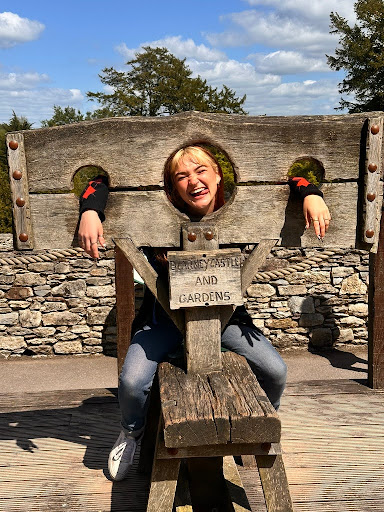
Paul Sibley, D.O., is an orthopedic hand surgeon with the Lehigh Valley Health Network. He specializes in hand, wrist, and elbow surgery and has over 14 years of experience.
However, even after 14 years of hand surgery, Dr. Sibley had his first arthroscopy with a patient who was awake. That patient happens to be our provost, Dr. Carol Traupman-Carr.
Traupman-Carr was having some trouble with her left hand. She had a trigger finger, which is when the finger gets stuck in a bent position and straightens suddenly. She also had pain in her knuckle on the same finger for an unknown reason. There could be some sesamoiditis in that finger, which would be very rare, or some other reason for the pain.
In essence, Sibley was going to perform a trigger finger release to make it easier to bend the finger and an MCP arthroscopy, which essentially means that he was going to use a fiber optic camera to probe the Metacarpal Phalangeal (MCP) joint to diagnose what was going on in that particular joint.
Surgeries, in general, are performed when the patient is asleep, so as to make it easier for the surgeon. An arthroscopy for a joint in the hand is no exception to that rule. In this case, the arthroscopy, on insistence by Traupman-Carr, was performed when she was awake, and it actually made the surgery more successful, as she actively participated.
Before the surgery commenced, Sibley injected lidocaine mixed with epinephrine into the hand. Lidocaine with epinephrine has an acidic pH, so he neutralized the acid with a base called sodium bicarbonate. This was done to numb the hand. Traupman-Carr remarked that her hand started getting swollen and fat.
In the operating room, Sibley started by performing the trigger finger release. He made an incision around the A1 pulley. The A1 pulley provides support to the MCP joint and maintains stability. In this case, the pulley was unexpectedly tight, and there was a lot of inflammatory tissue (tenosynovitis) around the pulley, which Sibley debulked. Afterward, Traupman-Carr could easily bend her finger.

Then Sibley moved on to the arthroscopy. He started by using an arthroscopy traction tower to provide tension and create space for him to operate.
Dr. Sibley used a traction tower to hold up the index finger.
Then he inserted medicine into the MCP joint on the ulnar side. He made a hole where that medicine was put in and inserted a sheath where the arthroscope (camera) would enter. The camera indicated that Traupman-Carr had inflammation/redness in multiple areas around the proximal phalanx and in the joint capsule.
In order to clean out the inflammation, Sibley used what is called a shaver. He inserted the shaver on the radial side of the MCP joint and cleaned out the inflammation. He then used saline water to suck up the synovitis (inflammation).
As Sibley continued to poke around the joint, he found that Traupman-Carr had some radial collateral ligament fraying, which is normal with age.

Throughout this part of the surgery, Traupman-Carr said she felt great. She was actually very enthusiastic about getting to see the inside of her hand, a feeling not many people have about surgery. Even more so, she said that she was going to attend a meeting right after the surgery and was still going to perform a two-hour piano mini-concert for her family in the coming weeks. I guess the phrase “taking it easy” isn’t in her vocabulary.
Sibley said that the procedure was a little different than usual, but it wasn’t all that much more difficult. Knowing what the patient was thinking made the procedure easier in some cases.






